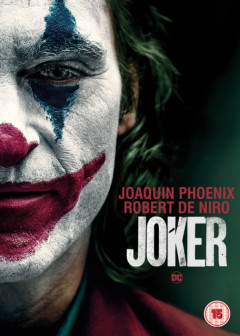Filter by
Found 1904 from your keywords: callnumber=7

Repulsion 1965 DVD
- Edition
- -
- ISBN/ISSN
- -
- Collation
- -
- Series Title
- -
- Call Number
- 791.4372 POL r
- Edition
- -
- ISBN/ISSN
- -
- Collation
- -
- Series Title
- -
- Call Number
- 791.4372 POL r

Black Swan DVD
- Edition
- -
- ISBN/ISSN
- -
- Collation
- -
- Series Title
- -
- Call Number
- 791.4372 ARO b
- Edition
- -
- ISBN/ISSN
- -
- Collation
- -
- Series Title
- -
- Call Number
- 791.4372 ARO b

The Secret Life of Walter Mitty DVD
- Edition
- -
- ISBN/ISSN
- -
- Collation
- -
- Series Title
- -
- Call Number
- 791.4372 STI s
- Edition
- -
- ISBN/ISSN
- -
- Collation
- -
- Series Title
- -
- Call Number
- 791.4372 STI s

La La Land DVD
- Edition
- -
- ISBN/ISSN
- -
- Collation
- -
- Series Title
- -
- Call Number
- 791.4372 CHA l
- Edition
- -
- ISBN/ISSN
- -
- Collation
- -
- Series Title
- -
- Call Number
- 791.4372 CHA l

Singin' in the Rain DVD
- Edition
- -
- ISBN/ISSN
- -
- Collation
- -
- Series Title
- -
- Call Number
- 791.4372 STA s
- Edition
- -
- ISBN/ISSN
- -
- Collation
- -
- Series Title
- -
- Call Number
- 791.4372 STA s

Shin Godzilla DVD
- Edition
- -
- ISBN/ISSN
- -
- Collation
- -
- Series Title
- -
- Call Number
- 791.4372 ANN s
- Edition
- -
- ISBN/ISSN
- -
- Collation
- -
- Series Title
- -
- Call Number
- 791.4372 ANN s

Joker DVD
Driven insane by the disregard shown toward him by Gotham City's inhabitants, failed stand-up comedian Arthur Fleck turns to a life of crime: as the Joker. With seemingly everyone paying attention to his reign of terror, Joker soon becomes an icon of fear and, to some, inspiration.
- Edition
- -
- ISBN/ISSN
- 5051892225588
- Collation
- -
- Series Title
- -
- Call Number
- 791.4372 NIR j

Inception DVD
Visionary filmmaker Christopher Nolan (MEMENTO, THE DARK KNIGHT) writes and directs this psychological sci-fi action film about a thief (Leonardo DiCaprio) who possesses the power to enter into the dreams of others.
- Edition
- -
- ISBN/ISSN
- 9780521399425
- Collation
- -
- Series Title
- -
- Call Number
- 791.4372 NOL i
 Computer Science, Information & General Works
Computer Science, Information & General Works  Philosophy & Psychology
Philosophy & Psychology  Religion
Religion  Social Sciences
Social Sciences  Language
Language  Pure Science
Pure Science  Applied Sciences
Applied Sciences  Art & Recreation
Art & Recreation  Literature
Literature  History & Geography
History & Geography